Mark Chapman has an enviable job as the chief engineer of the Bloodhound SuperSonic Car (SSC), a project launched in 2006 by Richard Noble with the aim of creating a jet and rocket powered car that could break the 1,000 mph world land speed record.

Over the past seven years many companies, engineers, designers and students have dedicated time and effort to designing and manufacturing various aspects of the car.
The end result is a slender, 14 metre long and seven tonne car that can produce more than 135,000 horsepower – that is six times the power of all the Formula 1 cars on a starting grid put together!
D3D: For a lot of your career you’ve worked in aeronautical engineering. Is this your first car project and how did you become involved in it?
MC: This is the first proper car project I’ve been involved with. I had a message left on my answer phone saying that a “mutual acquaintance had suggested I may be interested in being involved in a unique vehicle based project.”
I went to a pub in Bristol and was shown a very early concept for the car and was hooked! That was over five years ago.
D3D: But then again the Bloodhound is not really a typical car project. Is a lot of what you’ve learnt in terms of propulsion systems and fluid dynamics transferrable to this project?
MC: Bloodhound is unique in that it’s part car, part jet fighter and a splash of spaceship. There are some aspects that are directly equivalent but it tends to be the combination of all three that keeps it interesting.
Things like the fluid dynamics of flow around a shape at Mach 1.4 are well understood. However, in our case we’re doing the analysis in the proximity of a ground plane and that’s a very different problem.
D3D: What would you say has been the biggest engineering challenge of the Bloodhound SSC project?
MC: The trouble (or beauty) of Bloodhound is the challenges keep changing.
Three years ago the biggest challenge was to come up with an external aerodynamic shape that was stable throughout the mach no. range.
Top of the list currently are the front wheel brakes and managing the lateral stability of the car.
D3D: A number of sources have contributed to the design and engineering of the Bloodhound. Was this ‘crowd sourced design’ something you were keen to do?
MC: Definitely, it’s been an essential part of the design process. With the core design team being so small we’ve always looked to industry and academia to provide a wealth of ideas and experience that we as a project can draw upon and form into a cohesive design.
D3D: How long until you race the car?
MC: The plan is to complete the car this year so it is ready for installed engine tests by autumn. Depending on the rains in South Africa, we will either take it there straight after the UK runway testing or early in 2014.
D3D: Despite the ultimate challenge of breaking the world speed record, the Bloodhound project has really inspired young people and the interest in it has been huge. Do you feel proud of what you and the team have achieved?
MC: For us as a team, breaking the land speed record has been a secondary goal – our primary aim has always been to enthuse and inspire the next generation to be interested and excited by a technology based career.
I’m very proud at how far we’ve come in the last few years, and I think we have shown our genuine commitment to this.
But we are always seeking to improve and as we get close to running the car, I’m hoping people will start to see a real change in how we are able to engage.
D3D: Lastly, there is a lack of young people who are taking up engineering as a career. What would you say to encourage them to study engineering?
MC: When I was at school no one championed what a great career engineering is. It is one of the few careers that is truly universal, the skills learnt are highly transferrable and there’s no reason to ever be bored.
I have been lucky enough to work throughout Europe and North America on a wide range of projects from software development through to sewage works via planes and the odd supersonic car. There really is no limit as to where engineering can take you.
bloodhoundssc.com
https://youtube.com/watch?v=ajCmaaX_82Q
Class act
Bloodhound SSC is an international education initiative with the core aim of inspiring young people to pursue careers in Science,
Technology, Engineering and Mathematics (STEM) by showcasing these subjects in an exciting way.
In the first 18 months of the launch of the Bloodhound Education Programme, 4,000 schools registered with all the information about the research, design, build and testing of the car being made available to teachers and students.
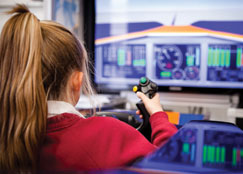
For instance, 13 and 14 year olds from Joseph Leckie Community Technology College in Walsall spent two terms studying the Bloodhound SSC in great detail before designing and developing a scale model rocket car, which they raced against each other.
A number of interactive classrooms have also been set up at various locations around the country including the Bloodhound Education Centre at the Manchester Communication Academy where students are able to study the Bloodhound Education curriculum resources, manufacture CAD designed cars on CNC machines and learn how jet rocket engines work using the interactive white boards.
bloodhoundssc.com/education
Education initiatives aimed at getting young people who are still at school excited by a career in engineering
Young Engineers
Organiser: Young Engineers
Description: Young Engineers is one of the UK’s biggest educational charities devoted to developing the next generation of engineers, scientists and technologists through after-school clubs.
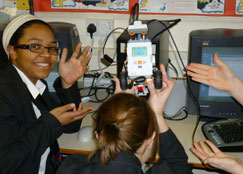
It provides activities, competitions and co-ordination for thousands of young people to learn about engineering and science in a practical and fun way.
Activities: Young Engineers’ ever expanding range of activities include the Club Network that supports the setting up of extra-curricular engineering clubs as well as STEM Challenge Days. Additionally, it also runs a wide variety of national competitions and activities covering ages 7 to 19.
Supporters/sponsors: Young Engineers is backed by companies in industry and business generally and by national organisations and engineering institutions. It has a wide range of sponsors that reflect the diversity of modern-day engineering, some of which include Autodesk, Renishaw, Schaeffler and Rapid.
youngeng.org
Imagineering
Organiser: Imagineering Foundation
Description: Imagineering opens a window for youngsters onto the fascinating world of engineering, science and technology through fun hands-on activities and personal involvement.
As a successful nationwide initiative it presents a positive and realistic view of modern manufacturing and utility engineering.
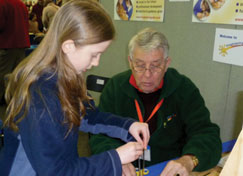
Activities: Imagineering’s main activities include the annual Imagineering Fairs as well as weekly Imagineering Clubs.
These hour-long clubs, which take place after school, are run by volunteer engineer tutors and are aimed at 9 to 12 year olds, who have fun learning basic skills, using simple tools, and following set instructions to make models that they can then take home when complete.
Supporters/sponsors: Imagineering works hand-in-hand with professional organisations and companies, and dovetails neatly with educational initiatives promoting engineering skills.
imagineering.org.uk
Greenpower
Organiser: The Greenpower Education Trust
Description: Its mission is: to change current views about engineering, presenting it as a fascinating, relevant and dynamic career choice for any young person; to demonstrate the importance of engineering, and associated STEM subjects, to solve the problems faced by societies today particularly in the areas of sustainability; and to link education, industry and community through inspirational engineering projects.
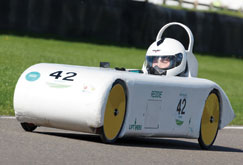
Activities: The initial Greenpower project in 1999 was an electric car challenge that required students, guided by their teachers and an industry mentor, to design, build and then race an electric car. Since then, Greenpower has expanded significantly and now works with 500 schools providing events around the UK.
Supporters/sponsors: Greenpower works with a wide range of partners and sponsors including Siemens / Solid Edge, IET, Fording Bridge, Ford and Unipro.
greenpower.co.uk
Tomorrow’s Engineers
Organiser: EngineeringUK
Description: The Tomorrow’s Engineers initiative brings engineering into the classroom to give young people the chance to get hands on with engineering and ask questions about what real-life engineering jobs entail.
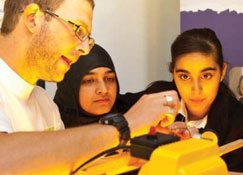
This is underpinned by curriculum-linked careers information and resources and an ambassador programme.
Activities: Working with businesses, not for profit organisations and charities, the schools programme is made up of a number of initiatives, such as industry visits, workshops, STEM Ambassador partnerships and careers resources.
These careers resources include video case studies, postcards for students, a leaflet for parents, career route maps and a resource pack for teachers, all of which are available online.
Supporters/sponsors: Tomorrow’s Engineers is led by EngineeringUK and the Royal Academy of Engineering, with support from The Lloyd’s Register Educational Trust and others.
tomorrowsengineers.org.uk
The James Dyson Foundation
Organiser: Dyson
Description: James Dyson set up the James Dyson Foundation in 2002 to support design and engineering education, which is specially aimed at inspiring young people to study engineering and become engineers by encouraging students to think differently and to make mistakes.

The Foundation believes that Design and Technology lessons should inspire pupils and wants to bring the exciting, risky, real world of engineering into the classroom. This is done through various resources including the Engineering Box, which is a box filled with activities for a school to use as a teaching aid.
The Foundation loans the boxes to schools for four weeks, free of charge. There are also various videos and challenges for young people available on the website such as building their own cyclone vacuum.
Activities: The Foundation also supports Design and Technology teachers, through sponsorship of the Design and Technology Association’s Teacher of the Year awards.
jamesdysonfoundation.co.uk
TeenTech
Organiser: TeenTech
Description: TeenTech runs lively one-day events to help young teenagers see the wide range of career possibilities in Science, Engineering and Technology.

Activities: TeenTech events take place at venues across the UK. At each event 300 pupils from 30 different schools benefit from hands-on exhibits and challenges run by leading organisations.
It also runs the annual TeenTech Awards for UK students aged 11 to 16 who work in teams to look at problems large and small and see if they can find a better way of doing things.
Supporters/sponsors: TeenTech works collaboratively with companies, leading Universities, Education Business Partnerships and business organisations. It also has a wide range of sponsors and supporters who make the activities possible including, amongst many others, Airbus, Atkins, Google, BT, Cisco, Air Products, Intel, GE, GlaxoSmith Kline, Samsung, Sony Europe, JVC, CA Technologies and National Grid.
teentechevent.com
The Big Bang
Organiser: EngineeringUK
Description: The Big Bang is the largest celebration of science, technology, engineering and maths for young people in the UK. Its aim is to show young people (primarily aged 7 to 19) just how many exciting and rewarding opportunities there are out there for them with the right experience and qualifications.
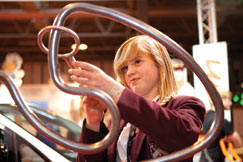
Activities: Through its national event – The Big Bang Fair – and through a series of regional and local events, it aims to inspire students to make the link between the classroom and great careers.
Supporters/sponsors: Led by EngineeringUK in partnership with the British Science Association, the Institute of Physics, the Science Council, the Royal Academy of Engineering and Young Engineers, The Big Bang is supported by The Department for Business, Innovation and Skills as well as numerous sponsors from industry including, amongst others, Siemens, BAE Systems, Land Rover and Rolls-Royce.
thebigbangfair.co.uk
TCT Bright Minds UK
Organiser: Rapid News Communications Group
Description: A new initiative will be featured at this year’s TCT Show + Personalize 2013, which is taking place from 25 to 26 September 2013 at the NEC, Birmingham.
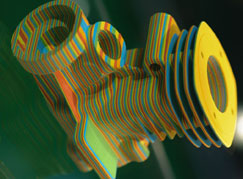
Building on a successful programme that has been running at the TCT event for many years, TCT Bright Minds UK 2013 will see a classroom built in the heart of the exhibition floor where up to 300 schoolchildren will have a chance to get their hands on CAD and 3D Printing technologies.
The programme is designed for students in Secondary School education in the UK. Each session will last approximately two hours and will also give participants entry to TCT Show + Personalize.
Supporters/sponsors: Black Country Atelier will run the sessions with the equipment being provided free-of-charge by 3D Systems.
More info: Schools within the UK wishing to participate should contact Jing Lu (jinglu@blackcountryatelier.com) to register their interest.
tctshow.com
Be a STEM Ambassador
If you are an engineer interested in working with children in schools and giving them an idea of the type of engineering you work in (or have worked in) then you can join Science, Technology, Engineering and Maths (STEM) Ambassadors.
These are people from STEM backgrounds who volunteer as inspiring role models for young people contributing both to regular lessons or participating in extra-curricular activities such as STEM Clubs, Careers Days and visits. Interested? You can register online by clicking here.
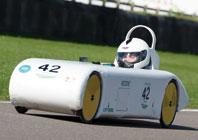
Inspiring a new generation of young engineers
Default







